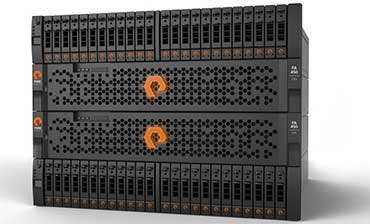Pure Storage Brings All-Flash Storage Arrays Mainstream With Replication

Enterprise all-flash storage array vendor Pure Storage Thursday unveiled new lower-cost and higher-capacity versions of its FlashArray series, as well as a new version of its Purity software that makes the company one of the first to bring enterprise-level replication to flash storage solutions.
The ability to do replication with Pure Storage FlashArray solutions fills a huge gap in the all-flash storage array market, said Matt Kixmoeller, vice president of products at the Mountain View, Calif.-based vendor.
"A lot of applications require disaster recovery, which requires replication," Kixmoeller said. "This is the final feature. It addresses a hole in our products, and now lets Pure Storage address all enterprise environments."
[Related: EMC Acquires Server-Side Flash Developer DSSD, Plans 2015 Product Release ]
That capability addresses a critical requirement for enterprise customers, said Richard Heard, president of Red8, a Costa Mesa, Calif.-based solution provider and Pure Storage partner.
"Clearly, having the ability to do backups and replicate data is critical to any storage, especially flash storage," Heard said. "It's been the missing piece in this market. It's important for Pure Storage and for any flash storage vendor."
Another solution provider, who requested anonymity because of relationships with both Pure Storage and a competitor, said replication is a welcome addition.
"Early on, replication was not a big deal because a lot of storage startups didn't have it," the solution provider said. "But the market is now open to trying out flash storage in non-niche workloads. For Pure Storage, this is the last check box in their features list."
Purity 4.0’s new FlashRecover feature provides data replication and snapshot services that are data reduction-aware to improve data protection for on-premise and remote data centers, Kixmoeller said. It works across multiple FlashArray 400-series arrays in both fan-in and fan-out configurations, and supports replication of single volumes, multiple volumes or an array's complete data set, he said.
Also included is the ability to set data protection policies and support for 256-bit AES encryption.
On the hardware side, Pure Storage expanded its FlashArray line with two new models that straddle the capabilities of its current model, the FlashArray 420, which has a usable maximum capacity of 125 TB.
For midsize enterprise customers, the new FlashArray 405 offers up to 40 TB of usable capacity in a 1U solution for top-of-rack configurations, Kixmoeller said.
NEXT: Using Pure Storage's New Hardware, Software To Expand Partner Opportunities
Also new is the FlashArray 450, which doubles the capacity of the FA-420 to 250 TB, Kixmoeller said. The FA-450 also adds 16-Gbit Fibre Channel connectivity, which is double the 8-Gbit Fibre Channel bandwidth of the FS-420, he said. Also included are two 12-core, 2.7GHz Intel processors and 512 GB of RAM for each controller, he said.
The new capacity points for the Pure Storage all-flash storage arrays is key to expanding the technology to new customers, Heard said.
"Any time you can make a product more accessible to a wider customer base, you expand the addressable market while giving customers more opportunities to deploy the technology," he said.
The new hardware and software comes in the wake of Pure Storage pushing fast to make an impact on the nascent all-flash storage array before more established storage vendors such as EMC and NetApp do.
The company already has raised $470 million in funding, including its latest round which late last month brought the company $225 million and gave it an estimated valuation of more than $3 billion, said David Hatfield, Pure Storage president.
Pure Storage already has shipped more than 1,000 arrays and works with more than 200 tier-one channel partners, Hatfield said.
Pure Storage also is committed to remaining independent, he said.
"We're convinced storage over time will shift from mechanical disk to flash," he said. "The storage bottleneck is the speed of mechanical disks vs. flash. If we remove that bottleneck, we'll see major customer benefits."
Pure Storage also sees the fast-moving flash storage array market as presenting a classic innovator's dilemma for larger storage vendors, Hatfield said.
"We feel we are a replacement for EMC's VMAX and VNX, Hewlett-Packard's 3Par and so on," he said. "We've had lots of overtures from other vendors to acquire Pure Storage, but it's not something we're looking at."
On the channel side, the new Pure Storage hardware and software offers several unique opportunities for solution providers, said Michelle Graff, director of worldwide channel programs and marketing for the company.
Before, with a single model, partners were limited to point solutions, Graff said. "With the new hardware, partners can move in for more opportunities with smaller and larger customers," she said.
The fact that replication is free also is huge for the channel, Graff said. "This makes it easier for partners to sell two arrays, and not just one," she said.